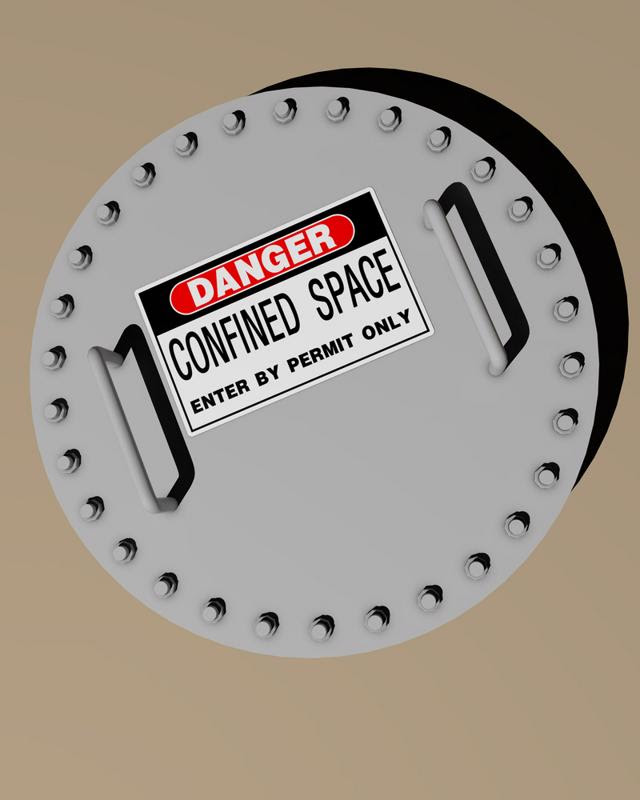Protect Employees with Improved Confined Space Safety Training

What are OSHA’s rules around confined space entry – and how should you train employees to operate safely in these areas?

What should companies do to prepare for confined space operations?
What Does OSHA Require?
The Occupational Safety and Health Administration (OSHA) is the organization behind U.S. companies’ confined space safety and training requirements. OSHA’s rules about confined spaces are clear:
These are environments that feature multiple hazards, from entrapment in closed areas to dangerous machinery, restricted airflow or atmospheric contamination.
Confined Spaces vs. Permit-Required Confined Spaces
OSHA maintains a set of guidelines around confined spaces, with some areas simply classified as confined and others requiring permits for workers who operate within them. The basic definition of a confined space applies to areas large enough for employees to enter fully but not meant for continuous occupancy. These spaces must have limited entry or exit options to be considered confined.
Permit-required confined spaces conform to all of the descriptors and also involve extra potential hazards. These areas may involve atmospheric risks or materials that can engulf employees. The spaces could also trap or asphyxiate employees with walls that converge or a floor that leads down to a small area.
The Confined Space Standard
OSHA requires employers to determine whether their spaces require permits, according to the organization’s definition. If a workplace does include permit spaces, the company has to inform employees working in those areas of the potential risks while keeping non-approved employees away with danger signs. There are ways to negate some of the entry requirements around permit spaces by ensuring the areas are not hazardous, but in these cases, personnel have to test the space to verify it is indeed safe whenever someone enters it.
Developing a written program around permit space entry is an in-depth process designed to prevent employees from exposure to any and all harmful circumstances. In addition to testing the spaces for atmospheric risks whenever employees enter and posting signs to keep unapproved workers out, leaders should provide personal protective equipment, station attendants at the space entrance, create policies for summoning assistance and establish a written policy for issuing entry permits. Leaders should review processes and update them every year.
OSHA training requirements around confined spaces involve not just preparing the workers but also testing them to ensure they have retained the necessary knowledge about the risks in the work environments. When employees take on new job duties, when the permit space program or hazard profile changes or when a worker shows performance problems, the company must conduct new training. Employers must keep records of training that are accessible to workers and representatives.
 Confined spaces take many forms in the workplace.
Confined spaces take many forms in the workplace.What Training Courses Are Available?
Numerous training options are available for workers who serve in confined spaces due to the unique risk profile of those spaces. Video-based courses can give detailed overviews of the practices workers need to obey to make sure they don’t encounter unnecessary risk of entrapment, engulfment, suffocation or any of the many other dangers that may occur in limited-mobility spaces. The following are just a few examples of these courses:
- Survive Inside: Employee Safety In Confined Spaces: This course is designed with the OSHA confined space standard in mind, helping leaders design their permit systems. When permitting processes are implemented correctly, they encompass the names of approved employees, potential hazards in the space, rescue plans, PPE requirements and more. The course ensures companies don’t overlook any of these elements.
- Confined Space Entry: A Deadly Situation: One of the most compelling ways to prepare employees to operate safely in confined spaces is to remind them of the potential danger and teach them to recognize and avoid hazards. This course focuses on the many risk factors that tend to occur in restricted areas, noting that many of the deaths associated with confined space operations occur during rescue operations. The best way to keep everyone safe is to proactively prevent accidents.
- Confined Space Entry: Permit Required Confined Space: This course, consisting of 10 chapters, is designed with chemical and manufacturing plants in mind and designed around OSHA’s standards. In a large-scale facility, employees may encounter confined spaces such as the insides of empty liquid tanks. Learning how to operate safely when they encounter these risky conditions can help them come home safely.
The variety of training options on the market mirrors the many workplaces where workers might have to operate in confined spaces. No matter the exact circumstances, training and preparation are essential for overall employee safety.
Source